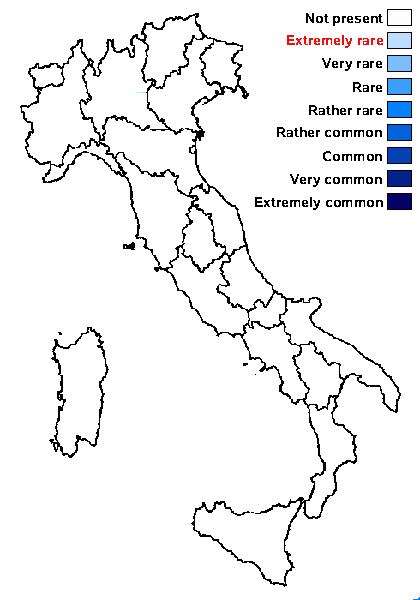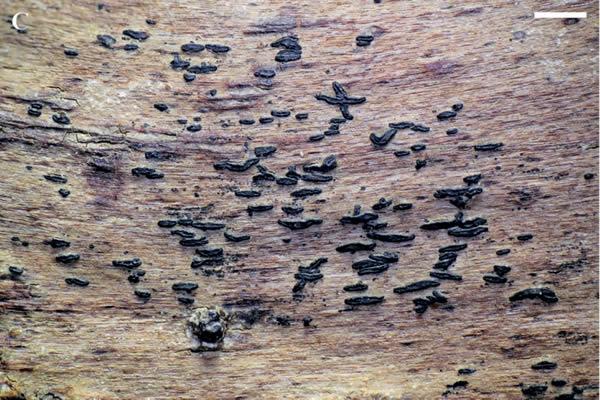Opegrapha subparallela Müll. Arg.
Flora, 54: 406, 1871.
Synonyms:
Distribution:
Description: Thallus crustose, endosubstratic, usually poorly evident or appearing as a paler patch on the substrate. Apothecia lirelliform, simple, long-ellipsoid, black, epruinose or partially with a rusty orange pruina, up to 1 x 0.2 mm, 2-4 times as long as wide, arranged parallel to each other following the wood fibres, with a slit-like to finally slightly expanded disc and a prominent proper margin. Proper exciple brown-black, extending below the hymenium and there forming a kind of stipe; epithecium brownish; hymenium colourless to pale brown, c. 60 μm high, I+ blue; paraphysoids branched and anastomosing, the apical cells hardly swollen. Asci 8-spored, cylindrical-clavate, the inner layer of endoascus amyloid in upper part, with a I+ blue ring visible around a small ocular chamber. Ascospores 3-septate, hyaline, up to 3 times as long as wide, 10-15 x 3.5-5 μm. Photobiont trentepohlioid. Spot tests: not known, but probably all negative. Chemistry: not known, but probably without lichen substances.Note: a poorly known lignicolous species very much recalling Xylographa parallela in general habit, perhaps related to >Alyxoria ochrocheila, rare throughout Europe, with a few scattered records from Finland and the Alps (Austira, Switzerland). To be looked for in the Italian Alps.
Growth form: Crustose
Substrata: lignum
Photobiont: Trentepohlia
Reproductive strategy: mainly sexual

Predictive model

Source: Dietrich M. & Brücker W. 2022. Die Flechten im Kanton Uri des 19. Jahrhunderts, dokumentiert von Anton Gisler (1820-1888) mit Einbezug der assoziierten Kleinpilze, Vergleich zur aktuellen Situation und Übersicht zur Lichenologie in der Schweiz im 19. Jahrhundert. 2022. Cryptogamica Helvetica, 24. 1295 figs., 413 pp.
Growth form: Crustose
Substrata: lignum
Photobiont: Trentepohlia
Reproductive strategy: mainly sexual

Predictive model


